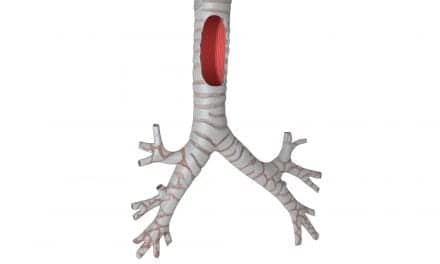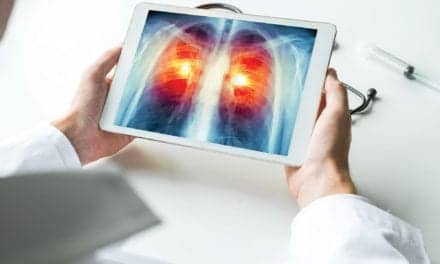
Edwin Coombs, Dräger

Dennis Mattessich, Impact

Jay Nash, Newport

Craig Berg, Hamilton
Today’s transport ventilators must go above and beyond the typical ventilator. They often need to be able to handle extreme conditions, while providing reliable care and improving patient outcomes. This month, RT asks four transport ventilator manufacturers to look at the evolution of transport ventilator technology and to discuss how their latest products are meeting the needs of health care professionals and patients.
Our respondents include Edwin Coombs, MA, RRT-NPS, regional director of marketing for respiratory care in North America at Dräger Medical Inc, Telford, Pa; Dennis Mattessich, vice president of marketing and business development at Impact Instrumentation Inc, West Caldwell, NJ; Jay Nash, executive vice president at Newport Medical Instruments Inc, Costa Mesa, Calif; and Craig Berg, vice president of sales at Hamilton Medical, Reno, Nev.
RT: As ventilator technology continues to evolve, what features and advantages do today’s transport ventilator devices have over the previous generation?
Edwin Coombs: Today’s transport ventilator technology continues to evolve to include additional monitoring, advanced modes, and enhanced alarms to promote safety outside of the traditional environment of the ICU. Special focus has also been placed on the needs of pediatric patients to ensure small tidal volume delivery and trigger sensitivity for spontaneous breathing efforts. Next generation devices should also have the ability to transfer patient data electronically to an information system to provide a comprehensive report of ventilator care.
Dennis Mattessich: Today’s transport ventilators need to be robust enough in design to handle most patients and patient conditions. It is critical that they offer flow rates low enough for the smallest of patients and sustained flows at higher rates for the difficult-to-ventilate patient. Other considerations include built-in components that allow the ventilator to be self-sufficient in its use. For example, incorporating a compressor to generate its own source of flow for the patient, thereby requiring no supplemental gas source for operation; built-in air/oxygen mixers as opposed to external add-ons; and long battery run times, usually greater than 6 hours. Some have rapid chargers to quickly recharge drained batteries when needed. The need for auxiliary battery backup due to short run times adds cost and inconvenience overall.
Considering that transport ventilators are used in many different situations and varying weather conditions, it is important to note the operating temperature range of the ventilators. And careful consideration in the design of the device can result in a ventilator that is highly efficient in the use of supplemental oxygen. Oxygen use represents dollars spent and takes up variable space in ambulances and aircraft, and any ventilator that can reduce the dependency on high O2 use can save money in the long run.
Ventilation modes for both volume and pressure targeting is key, and most transport ventilators offer them with and without pressure support. In addition, significant improvements in automatic leak compensation operation while in CPAP NPPV mode is a big step forward in both O2 conservation as well as patient comfort and synchrony by reducing the work of breathing.
Jay Nash: With each new generation of portable ventilators, microprocessor technology advances to allow the machine to offer more sophisticated features in a smaller package. At Newport Medical, our goal is to offer the latest features but ensure that the interface remains simple and easy to navigate. As equipment becomes more sophisticated, it is important that the user interface remains intuitive. This is especially important in the transport and EMS field where things move quickly and patient conditions can be unstable. The EMS personnel need a ventilator that is quick to set up and provides a range of features with benefits to take care of their patients.
Craig Berg: The complexity and capability of transport ventilators on the market today have come a long way, and features differ considerably among manufacturers. Today, an emergency provider has the option to have full ICU ventilation capability in a small, lightweight platform. Pulse oximbetry; EtCO2 monitoring; pressure and volume modes of ventilation; noninvasive ventilation; APRV; APV; DuoPap; full graphics, trending, and loops; an integrated blender for full range of Fio2 settings; hot swappable batteries; and advanced modes of ventilation, such as ASV closed loop ventilation, are now features that were not previously available on transport ventilators. These technologically advanced features allow users to tailor the therapy they need depending on the patient’s condition, regardless of location.
RT: Tell us about your company’s most recent transport ventilator products and why they are innovative for the needs of RTs.
Coombs: The Dräger Oxylog 3000 plus was released in November 2011 for the United States during the American Association for Respiratory Care International Congress and is the successor to the original Oxylog 3000. The new device boasts such features as integrated CO2 monitoring, Autoflow, and data export. Its compact design and accessories are made to fit the ergonomic challenges of both air and ground transport as well as within a facility.
Mattessich: Impact Instrumentation’s most recent introductions are the EMV+ and the AEV. Both are designed for use in austere environments and are ideal solutions for the transport markets. A few significant differentiating features are: 9.5 lbs in total weight; compact design with a built-in carry handle; full featured offering pressure and volume targeted breaths with pressure support; mask CPAP with bi-level modes and automatic leak compensation delivers up to 15 liters of supplemental flow only when needed; built-in high performance compressor and air/oxygen mixer; extended long life lithium ion battery runs 10 hours on a single charge; rapid charger that can charge a drained battery to 90% capacity in <<2 hours; integrated Spo2 for oxygen saturation and heart rate monitoring on a continuous basis; display that is visible in all lighting conditions; air worthiness release certification for shock, vibration, and altitude compensation from -2,000 to 25,000 feet; low use of supplemental O2; and Smart Help display aids users in diagnosis of issues with the ventilator should they occurNash: Last year, we launched our new HT70 ventilator, and in December, we added to the HT70 family with the new “Plus” model. Both the HT70 and the HT70 Plus have innovative features that can help clinicians and EMS personnel improve patient care and simplify their jobs—from default or custom preset options that set all parameters and alarms with the touch of one button to Quickset Alarms that take a look at parameter settings and then automatically set alarm limits. Newport’s HT70 touch screens are color coded to make navigation easy, and there is a built-in help guide for added support. The HT70 Plus includes an O2 cylinder calculator that will help monitor oxygen consumption and a battery time estimator to keep users informed when the battery needs to be charged.
It may surprise caregivers to discover that the HT70 offers many of the clinical capabilities currently available in critical care ventilators and that the HT70 can be used in so many applications: home care, transport, hospital, long-term care, and EP.
Berg: What makes the HAMILTON-T1 ventilator—which recently received FDA 510(k) approval—innovative is its compact, powerful design that includes all standard modes of therapy for ventilated intensive care patients outside the hospital. Most current transport ventilators are simply emergency ventilators that have been modified to have a broader range of capabilities, and this means that there inherently will be features that have been left out. Hamilton Medical took another approach: We took a fully loaded ICU ventilator and reduced size and weight, while placing it in a rugged housing small enough to fit into any mobile ICU environment. The result is a ventilator that is appropriate for all patients—from pediatric to adult—and covers the full range of clinical requirements: invasive ventilation, automated ventilation with Adaptive Support Ventilation, and noninvasive ventilation.
The HAMILTON-T1 combines reliability and high performance with advanced lung protective strategies and patient adaptive modes. In mobile ICU ambulances, in helicopters, in long distance ambulance jets, in intrahospital transport, in emergency departments, and in the ICU, the HAMILTON-T1’s fast setup and easy management ensure the most appropriate treatment for every patient.
RT: Maintaining and servicing transport ventilation products is important. Can you offer any precautions or advice to RTs about the use or care of any of your products?
Coombs: While a key point to the Oxylog 3000 plus is its ease of use, proper training is always paramount prior to any clinical use of the device. Dräger supports this with AARC-accredited CRCEs, comprehensive in-servicing, and skills documentation. Additionally for all Dräger customers, a 24/7 hotline via ICON is available to answer and support clinical calls for all devices in our ventilator portfolio, including the Oxylog 3000 plus.
Mattessich: Impact’s transport ventilators are designed to be low in maintenance requirements and low in total cost of ownership. Inlet filter changes may be needed once per year depending on use, and we supply users with two filters that are easily replaced should they become dirty from the environment in which they are used.
Nash: Maintenance on the HT70 ventilators is very easy and incurs very little cost. Of course, following good maintenance standards is important and this includes monitoring battery life and keeping filters clean and dry. Newport Medical has a strong reputation for ventilators that are very reliable and have long life spans. Since 1981, we have specialized in ventilator design and manufacturing, and that experience shows in the durability and ease of use of our products.
Berg: Hamilton Medical consistently maintains the highest scores from the US customer ventilator base for our low cost of ownership, reliability, training, service, and support as ranked by MD Buyline. The Hamilton-T1 ventilator was built with the rugged transport environment in mind. It is air-worthiness certified and ground transport certified. The preventive maintenance is on an annual schedule or 5,000 operating hours, whichever comes first. These can be completed by Hamilton Medical. In addition, biomed training courses are offered at our corporate headquarters in Reno. We offer single patient use or reusable flow sensors and a full selection of patient breathing circuits and accessories for the T1 ventilator. Testing for the ventilator is accomplished in two easy steps that include flow sensor calibration and leak test. The time to complete these preoperative tests takes less than 2 minutes.
Alison Werner is associate editor for RT. For further information, contact [email protected].










